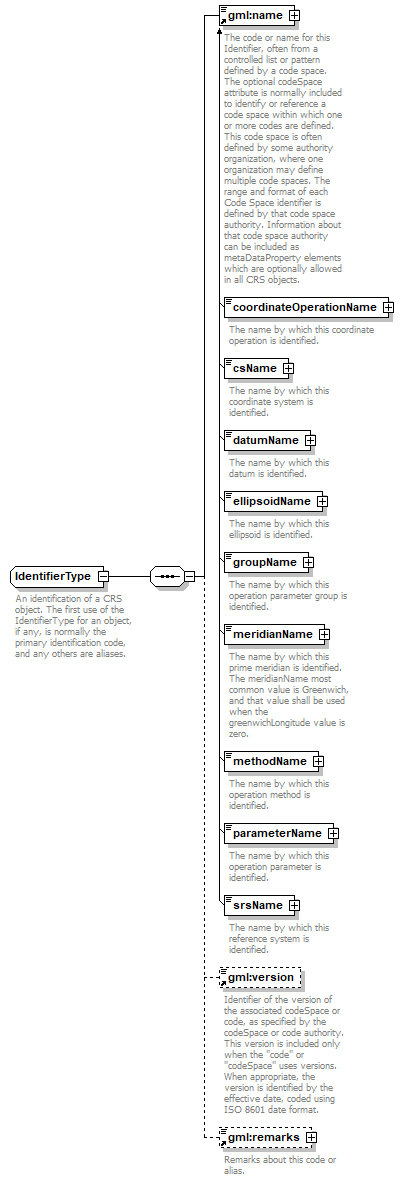| diagram |  |
||
| namespace | http://www.opengis.net/gml | ||
| children | gml:name gml:version gml:remarks | ||
| used by |
|
||
| annotation |
|
||
| source | <xs:complexType name="IdentifierType"> <xs:annotation> <xs:documentation>An identification of a CRS object. The first use of the IdentifierType for an object, if any, is normally the primary identification code, and any others are aliases.</xs:documentation> </xs:annotation> <xs:sequence> <xs:element ref="gml:name"> <xs:annotation> <xs:documentation>The code or name for this Identifier, often from a controlled list or pattern defined by a code space. The optional codeSpace attribute is normally included to identify or reference a code space within which one or more codes are defined. This code space is often defined by some authority organization, where one organization may define multiple code spaces. The range and format of each Code Space identifier is defined by that code space authority. Information about that code space authority can be included as metaDataProperty elements which are optionally allowed in all CRS objects.</xs:documentation> </xs:annotation> </xs:element> <xs:element ref="gml:version" minOccurs="0"/> <xs:element ref="gml:remarks" minOccurs="0"> <xs:annotation> <xs:documentation>Remarks about this code or alias.</xs:documentation> </xs:annotation> </xs:element> </xs:sequence> </xs:complexType> |
XML Schema documentation generated by XMLSpy Schema Editor http://www.altova.com/xmlspy